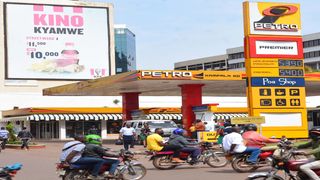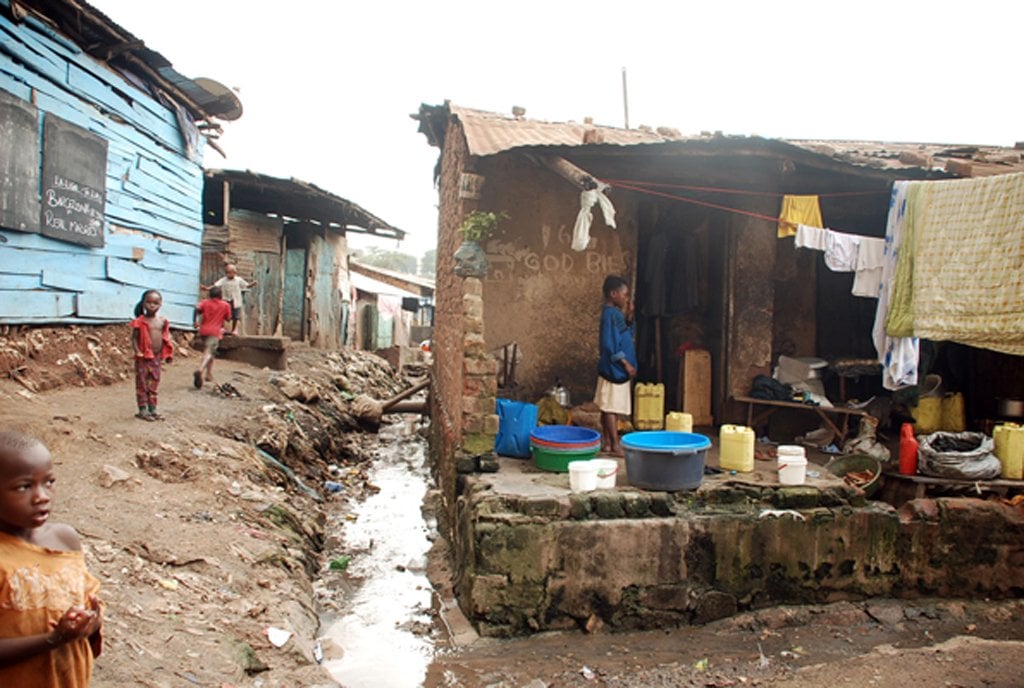
Boda boda’s ride by a petrol station in Kampala in May. High fuel prices increased the cost of doing business in 2022. PHOTO/FRANK BAGUMA
|People & Power
Prime
Why the economy struggled in 2022
What you need to know:
- Without realising that the economy had slowed significantly, entrepreneurs and businessmen continued to start businesses and launch products as they did in the early 2000s.
The Ugandan economy in 2022, like much of the global economy, saw stresses and challenges.
Some of this struggle, such as the rise in fuel and commodity prices, was the result of the international climate in the wake of the Russia-Ukraine war.
Some of it was the inevitable and still lingering consequence of the Covid-19 pandemic.
Some of this was the outcome of the development model that Uganda and most of Africa have chosen.
There were regular anecdotal clues into the health of the economy.
Newspaper headlines testified to the effects of the global and national Covid-19 lockdown.
Anywhere between 1,000 and 2,000 schools threatened with closure over bank loan defaults.
Several government-owned print newspapers discontinued in 2020.
The high fuel prices that went past Shs6,000 a litre and later dropped to just over Shs5,500.
The decision in late 2021 by the South African supermarkets Shoprite and Game to leave Uganda after 21 years and 18 years respectively.
Enrolment down at private universities, as families struggle to find semester fees. An increasing number of white-collar professionals leaving the private sector for government jobs or contesting for parliamentary seats.
Usually during times of robust economic growth, people find the private sector more lucrative than government service and many leave the civil service to start or run their own businesses.
During times of economic distress, business slows down to unprofitable levels and a monthly salary and regular per diem, especially in the wasteful government service, makes more sense than business.
Other examples were of government employees seeing their monthly salaries delayed and government agencies merged to save on costs.
The World Bank, in an October 5 report on the Ugandan economy, wrote: “The current account deficit widened to over nine percent of GDP, primarily reflecting a deterioration in the terms of trade and wider trade deficit...growth in real consumption slowed, possibly because of reduced purchasing power, limited credit growth, and job losses. Employment fell after the second lockdown in June 2021 and remained at the same level in June/July 2022.”
This last bit is important.
One year after the second lockdown of June 2021 and even with the economy having re-opened in January 2022, by mid-year employment was at the same level as during the June 2021 lockdown.
That explains the sense of desperation being felt by the general population. The Covid-19 contraction went from being a temporary situation and into becoming a new normal.
The debt crisis
It was reported that about 30 percent of the GDP was going into debt repayment, then whatever GDP growth rate is recorded in the 2022/2023 fiscal year 30 percent will be to be deducted to reflect the amount of growth that actually ploughed into the economy.
In other words, if the economy grows by six percent, two percent of it goes into debt servicing, leaving four percent available to the population.
However, the population growth rate itself has to be deducted from the four percent GDP growth rate in order to get a final, net GDP growth.
Given Uganda’s population growth rate of about three percent, it’s safe to say net GDP growth is at best around two percent.
The World Bank report once again: “[Growth] since 2011 has barely surpassed the country’s high population growth rate of three percent.”
This would explain why many state that the annual GDP growth rates announced during the June government budget presentation before Parliament is at odds with their daily reality.
Good intentions, wrong outcome
Why had the government got these loans?
It was mainly to build or repair public infrastructure such as roads, bridges, hydropower dams, upgrade Entebbe International Airport, and revive Uganda Airlines.
The reasoning, valid in many ways, was that in order to jump-start an economy, the government should invest heavily in the factors and stimulants of production, such as roads, railways, energy, and so on.
What rarely gets emphasised is the need to invest in the creation of demand.
The Uganda Protectorate colonial government, for example, focused on demand as the measure of investment.
Tarmac roads were built because of existent demand, not in the hope of creating future demand.
In many upcountry towns, the new tarmac roads serve to dry cassava and other agricultural items. Most local residents still travel on foot or commute by motorcycles and bicycles.
The Uganda Railway was extended to Kasese in 1956 because of the opening of Kilembe copper mines and the need to transport the ore to Jinja for smelting.
Everything was created or invested in because of current need and demand, not in the hope of this investment as a stimulant of future demand.
The government three years ago revived Uganda Airlines, at a time when Entebbe International Airport was already served by several regional and long-haul international airlines.
On top of the loans to revive the airline that must now be repaid, the airline itself is subsidised by the government, the perfect recipe for a loss-making white elephant.
Dozens of sleepy upcountry towns with few cars and low vehicle traffic, have now got brand new municipal roads paid for foreign loans.
Most of Uganda’s upcountry towns are, in reality, peri-urban and geographically and economically an extension of the rural village.
Food is grown in village gardens or, where traded, is sold at nearby village centres and roadside stalls.
And yet the government borrowed heavily to construct central markets in several towns, where most stalls stock vegetables and fruits, the same produce that is found everywhere along the roadside.
The result of all this is a looming debt default crisis for sub-Saharan Africa.
The October 2022 World Bank report on Uganda quoted earlier goes on to make this observation:
“Uganda’s growth model of debt-financed public spending—which emphasizes infrastructure and has crowded out private sector borrowing —is not sustainable. The State should instead support the economy through investments in human capital, through regulations that facilitate investment and job-creation, and through measures to reduce inequality and strengthen resilience.”
Kenya is struggling to repay the Chinese loan that built the new Nairobi-Mombasa standard gauge railway, which is seeing low passenger and freight volumes.
The new international airport outside Hoima’s petroleum fields will probably end up under-used like Kisumu International Airport in Kenya.
Lack of business information
Another critical problem in Uganda is the lack of business intelligence or advisory information.
Businessmen and other entrepreneurs working on a hunch and assumption, start restaurants, hotels, health clubs, supermarkets, tourist lodges, radio stations, fuel stations, and other businesses in the hope that the existence of these new businesses will attract demand.
There was nobody to advise on whether or not to invest. It is assumed, without much thought, that the growth that began in the mid-1990s was to continue like a law of nature.
Without realising that the economy had slowed significantly, entrepreneurs and businessmen continued to start businesses and launch products as they did in the early 2000s.
However, as with the negligible benefit of new government infrastructure, Uganda has ended up with a glut of businesses whose supply far exceeds demand.
When all these factors are added up, we see why the economy struggled in 2022 and is likely to continue struggling well into 2023.
Report
The current account deficit widened to over nine percent of GDP, primarily reflecting a deterioration in the terms of trade and wider trade deficit...growth in real consumption slowed, possibly because of reduced purchasing power, limited credit growth, and job losses.
Employment fell after the second lockdown in June 2021 and remained at the same level in June/July 2022,’’ The World Bank, in an October 5 report on the Ugandan economy.





